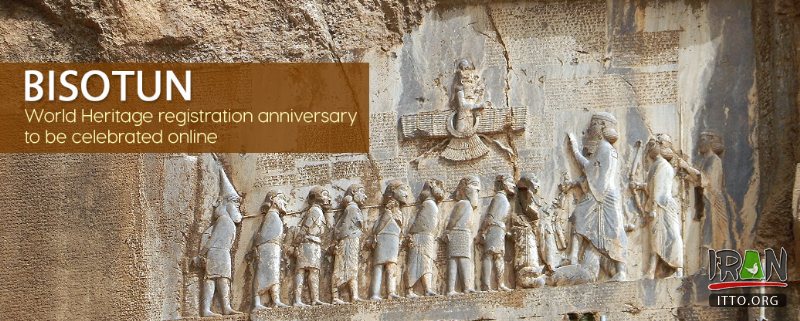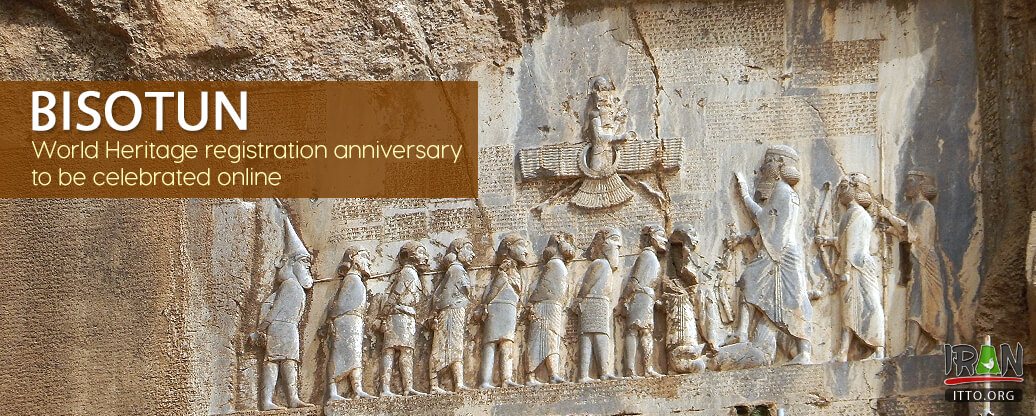The 14th anniversary of inscribing the ancient site of Bisotun on the UNESCO World Heritage list will be celebrated during a festival which will be held online in the western province of Kermanshah on Friday.
Located 30 kilometers east of the provincial capital Kermanshah, at the foot of the Zagros Mountains, Bisotun (Behistun) was inscribed on UNESCO’s World Heritage list on July 13, 2006.
Bisotun is one of the province’s tourism symbols and capacities, and organizing such programs is the least work that could be done, while coronavirus outbreak has put everything on a halt, provincial tourism chief Omid Qaderi said on Monday.
A number of prominent artists of the province as well as the historical site’s experts and researchers are scheduled to attend the festival to promote and introduce this UNESCO-tagged site more properly, the official added.
Earlier this month provincial deputy tourism chief Ali Saber announced that visits to Kermanshah tourist sites plummeted during the first three months of the current Iranian calendar year (started March 20), compared to the same period last year as travel curbs were imposed to limit the spread of the coronavirus pandemic.
He also said that the coronavirus disease has had a vast impact on the province’s tourism, and added, “The infection started spreading when we were expecting to meet a high season in tourism of the province. We had already planned to well host a large number of travelers.”
However, he expressed his hope that the province would witness a tourism boom after coronavirus.
Bisotun is a patchwork of immense yet impressive life-size carvings depicting the king Darius I and several other figures. The area was on the ancient trade route linking the Iranian high plateau with Mesopotamia and contains remains from prehistoric times to the Median and Achaemenid eras.
The principal monument of this archaeological site is the bas-relief and cuneiform inscription ordered by Darius the Great shortly after he ascended to the throne of the Persian Empire in 521 BC.
The bas-relief portrays Darius holding a bow, as a sign of sovereignty and treading on the chest of a figure who lies on his back before him. According to legend, the figure represents Gaumata, the Median Magus, and pretender to the throne whose assassination led to Darius’s rise to power.
Below and around the bas-reliefs, there are about 1,200 lines of inscriptions telling the story of the battles Darius waged in 521-520 BC against the governors who attempted to take apart the empire founded by Cyrus.
The inscription is written in three languages. The oldest is an Elamite text referring to legends describing the king and the rebellions. This is followed by a Babylonian version of similar legends. The last phase of the inscription is particularly important, as it is here that Darius introduced for the first time the Old Persian version of his res gestae (things done).
This is the only known monumental text of the Achaemenids to document the re-establishment of the empire by Darius I. It also bears witness to the interchange of influences in the development of monumental art and writing in the region of the Persian Empire. There are also remains from the Median period (8th to 7th centuries BC) as well as from the Achaemenid (6th to 4th centuries BC) and post-Achaemenid periods.
UNESCO has it that Bisotun bears outstanding testimony to the important interchange of human values on the development of monumental art and writing, reflecting ancient traditions in monumental bas-reliefs.



